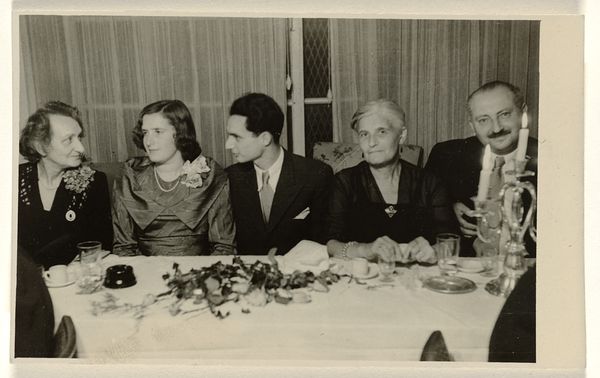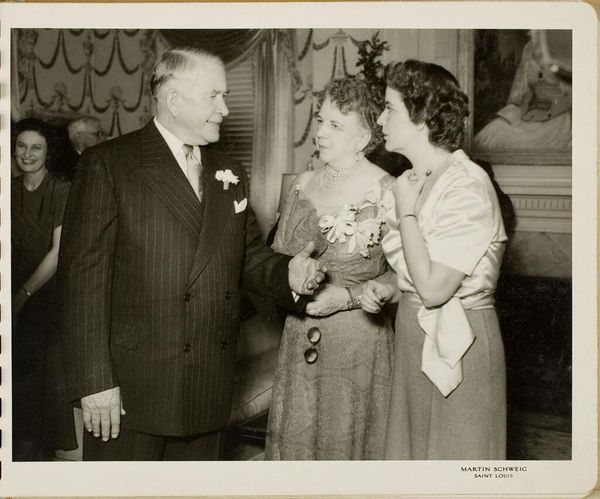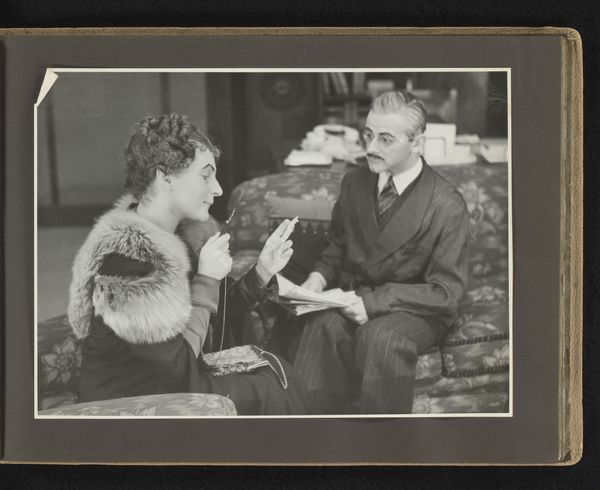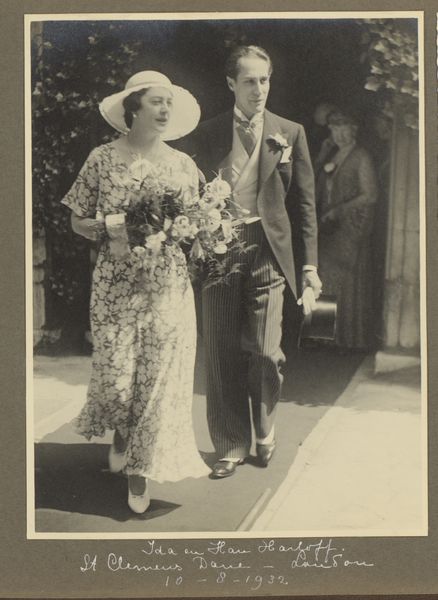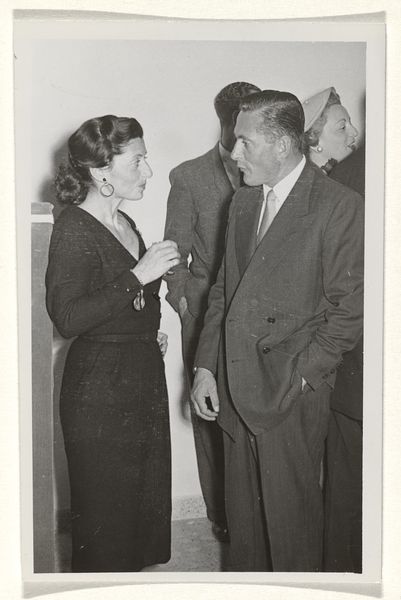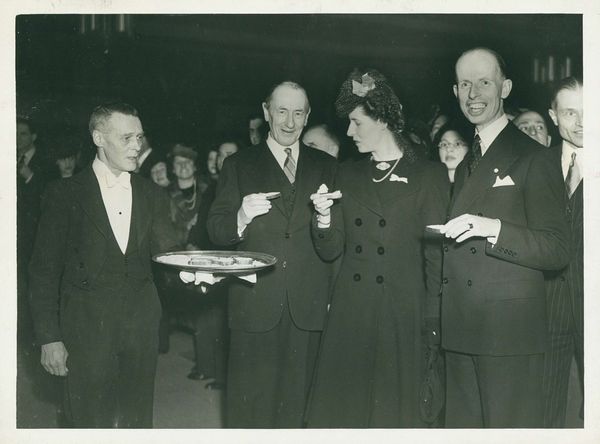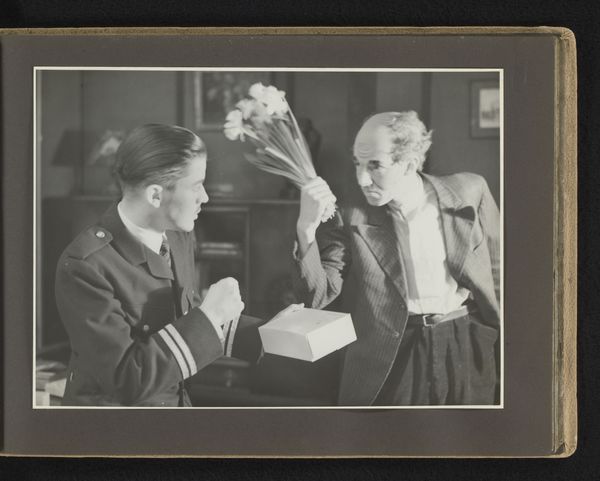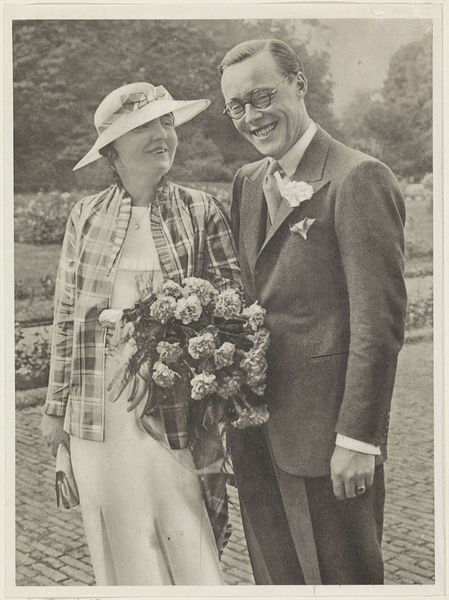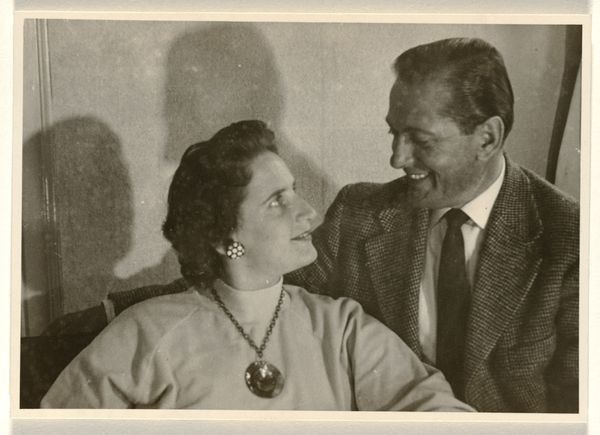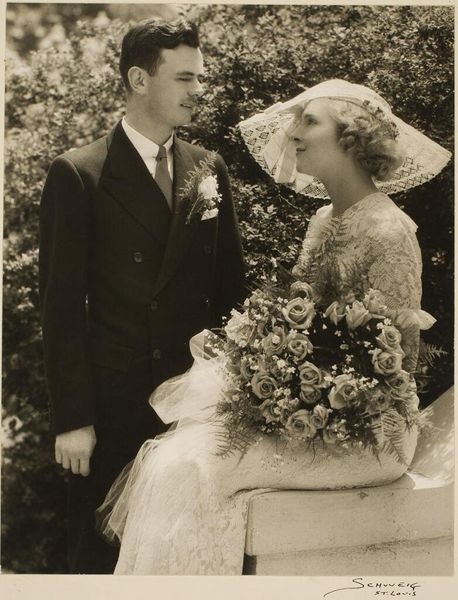
photography
#
portrait
#
archive photography
#
photography
#
historical photography
#
couple photography
#
realism
Dimensions: height 89 mm, width 122 mm
Copyright: Rijks Museum: Open Domain
Curator: It's interesting how stark and posed this photograph feels. What catches your eye first? Editor: It's the woman's gaze. So intense and directed upwards, away from her companion. There's a sense of...discomfort? Or perhaps longing? What can you tell me about this piece? Curator: This photograph, simply titled "Else Mauhs met een man naast zich", was taken sometime between 1900 and 1959. It resides here at the Rijksmuseum, and it’s an example of realism style archive photography attributed to the Algemeen Hollands Fotopersbureau. It's really quite striking, in a low key manner. Editor: The 'low key' nature works for it. Even the composition reflects a divide – literally, the table, figuratively their postures and especially their diverging lines of sight. He is all suit, and she is fur... they read like carefully cast archetypes. It definitely echoes the strict social codes prevalent through much of the 20th Century, no? Curator: Precisely! It’s fascinating how even in what appears to be a candid moment, so many symbolic elements are at play. Consider the flowers positioned between them – offering beauty, but ultimately a barrier too. Are they offering her the position, looking like a sort of master speaking with an actress ? The very absence of interaction is what screams the loudest. Editor: Absolutely, I think also we need to remember the act of photographic portraiture then carried its own weight, an act of remembrance or posterity as much as of artistic intent... The way it invites our own readings of it over the years since it was taken. Who were these people and where did they sit in the Dutch socio-political tapestry of the time. The answers lie just out of reach. Curator: Indeed. The historical context casts such a long shadow here. Each detail – from the woman's fur stole, symbolic of status and wealth, to the man's averted gaze – it adds layers of intrigue and unspoken narrative. It’s not merely a record but it seems also to carry social anxieties of class and, indeed, of gendered gaze. Editor: Yes... And perhaps, too, something about the weight of history. Both that which these people might have carried with them, and what the image itself represents, so long afterwards. The photo serves to allow conversations long, long, after their silent encounter.
Comments
No comments
Be the first to comment and join the conversation on the ultimate creative platform.
